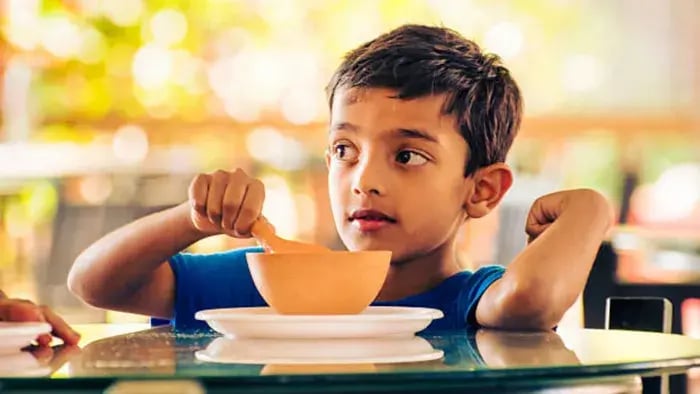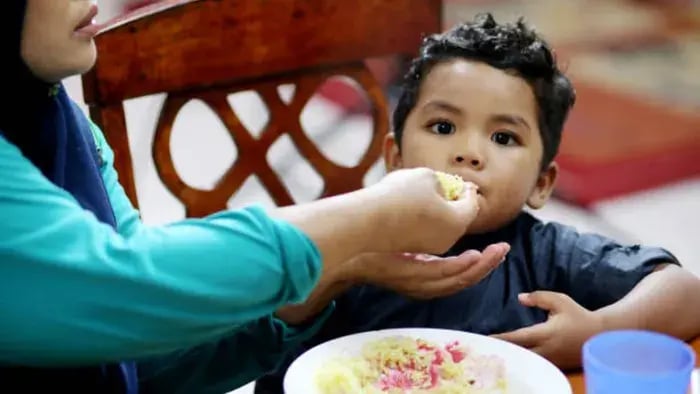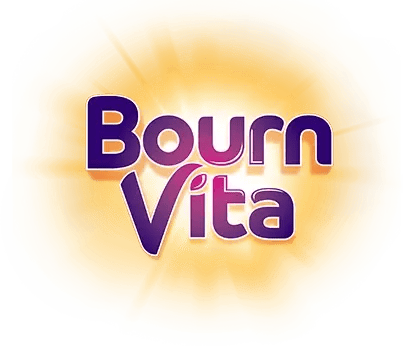- Whole Grains for Steady Energy
- Fruits for Natural Vitamins and Hydration
- Vegetables for Fiber and Immunity
- Protein-Rich Foods for Growth and Repair
- Dairy for Strong Bones and Teeth
- Healthy Fats for Brain Development
- Hydration for Overall Wellness
Introduction
Preschoolers are growing fast physically and mentally, so nutrition is a big part of daily care. According to the Dietary Guidelines for Indians, children between 4-5 years need the right balance of food groups to support strong bones, active muscles, sharp memory, and steady energy. A planned food chart helps parents give meals that are wholesome, age-appropriate, and fun for little ones.

At this age, children are developing eating habits that will last a lifetime. Introducing variety, whole grains, fresh fruits, vegetables, dairy, proteins, and healthy fats ensures they get the nutrients for growth and immunity. Small frequent meals work best as they match a child’s smaller appetite and meet nutritional needs. For example a plate of dal with rice and vegetables, a glass of milk with fruit, or snacks like idlis or parathas with curd are balanced and child-friendly options.
The challenge is to make meals both appealing and nutritious. Creative plating, colorful combinations, and familiar flavors will encourage children to eat without fuss. Parents can also adapt family meals into smaller portions so children feel included at the dining table. With consistency, patience, and variety, a food chart becomes more than a schedule; it becomes a guide to building healthy eating habits that support energy, learning, and growth in these formative years.
7 Essentials in a Food Chart for 4–5 Year Olds

Children between four and five years old are full of energy, curiosity, and constant growth. At this stage, they need a diet that provides the right mix of nutrients to fuel active play, support brain development, and strengthen bones and immunity. A food chart designed for this age group helps parents plan meals with balance and variety, making sure little ones receive everything they need without confusion.
This guide highlights the key food groups and practical tips you can include in your child’s daily meals to keep them nourished, satisfied, and happy.
Whole Grains for Steady Energy
According to ILSI India, whole grains such as chapati, brown rice, oats, and millets should form the base of your child’s diet. These foods provide long-lasting energy that fuels classroom concentration, outdoor play, and daily activities. The fiber content also supports digestion and prevents constipation, which is common at this age. Swapping refined grains like white bread with whole-grain alternatives ensures your child avoids energy crashes and stays active for longer periods.
Fruits for Natural Vitamins and Hydration
According to ISTI, seasonal fruits such as bananas, guavas, apples, and papayas deliver essential vitamins, minerals, and natural sugars that give quick energy. Vitamin C-rich fruits strengthen immunity, while potassium and fiber keep the digestive system healthy. Offering fruits as finger foods, smoothies, or fruit bowls makes them more exciting for children. Keeping variety prevents boredom and ensures they receive a wide spectrum of nutrients.
Vegetables for Fiber and Immunity
According to FSSAI, vegetables like carrots, spinach, beans, and peas bring important nutrients such as iron, vitamin A, and antioxidants that protect against infections. Including two to three types daily in meals, whether in dals, parathas, soups, or stir-fries, ensures children develop a taste for diverse flavors. Vegetables also support strong eyesight, healthy skin, and better immunity, while their fiber keeps digestion smooth.
Protein-Rich Foods for Growth and Repair
Research conducted by Nat Rev Neurosci in 2012, foods like dals, eggs, paneer, chicken, and fish are crucial for building strong muscles, repairing tissues, and supporting brain function. At this stage, children are constantly growing, and even small servings of protein at each meal make a difference. Pulses can be served in soups, khichdi, or dals, while paneer and eggs can be made into rolls or cutlets. Proteins also help children feel full for longer, reducing unhealthy snacking.
Dairy for Strong Bones and Teeth
A study published in Nutrients. 2020 highlights that milk, curd, paneer, and cheese are excellent sources of calcium and vitamin D, which strengthen bones and teeth during these growth years. A daily glass of milk or a small serving of curd helps meet nutritional needs easily. For children who may dislike plain milk, flavored options like smoothies or milkshakes with fruits can make it more enjoyable. Dairy also supports muscle strength and provides probiotics for a healthy gut.
Healthy Fats for Brain Development
A study published in Cureus. 2022, shows that nuts, seeds, nut butters, avocados, and small amounts of ghee or cold-pressed oils provide omega-3 fatty acids that enhance memory, focus, and brain development. At this age, the brain is rapidly developing, and healthy fats are crucial for sharper concentration and emotional balance. Offering a handful of soaked almonds, adding flaxseeds to parathas, or using ghee in rotis ensures children get the right fats without excess.
Hydration for Overall Wellness
Children often forget to drink water during play, leading to dehydration. Regular sips of water throughout the day, along with natural options like coconut water, buttermilk, or fresh soups, help keep energy levels stable. Research conducted by Nutrients. 2019 highlights that adequate hydration also supports digestion, prevents fatigue, and maintains overall wellness. Teaching children to drink water even when they are not thirsty helps build a lifelong healthy habit.
Conclusion

A food chart for 4 to 5-year-olds works as a daily reminder to include the right foods in the right amounts. With whole grains, fruits, vegetables, proteins, dairy, healthy fats, and hydration, you can create balanced meals that fuel both body and mind. Beyond nutrition, meals should be made colorful and engaging so that children look forward to eating. With patience, creativity, and variety, parents can help their little ones develop healthy eating habits that will support their growth, confidence, and overall well-being for years to come.
Her love for storytelling began with reading her grandfather’s speeches, where Tarishi saw the power of words in creating lasting memories. Combining her passions for food and writing, she has turned her life into a fulfilling path of sharing stories that celebrate flavours and how food brings communities together.
The views expressed are that of the expert alone.
The information provided in this content is for informational purposes only and should not be considered a substitute for professional medical advice, diagnosis, or treatment. Always seek the advice of your physician or another qualified healthcare provider before making any significant changes to your diet, exercise, or medication routines. This is a sponsored article.
References
https://pmc.ncbi.nlm.nih.gov/articles/PMC6356561/
https://pmc.ncbi.nlm.nih.gov/articles/PMC9641984/
https://pmc.ncbi.nlm.nih.gov/articles/PMC7353177/
https://pmc.ncbi.nlm.nih.gov/articles/PMC2805706/
https://www.fssai.gov.in/upload/knowledge_hub/19928164b641b8a487eHealthy%20food%20for%20Defence.pdf
https://www.indiascienceandtechnology.gov.in/home-garden/basics-nutrition
https://www.ilsi-india.org/PDF/Whole_Grains_For_Health_Monograph.pdf
https://www.nin.res.in/dietaryguidelines/pdfjs/locale/DGI24thJune2024fin.pdf
















